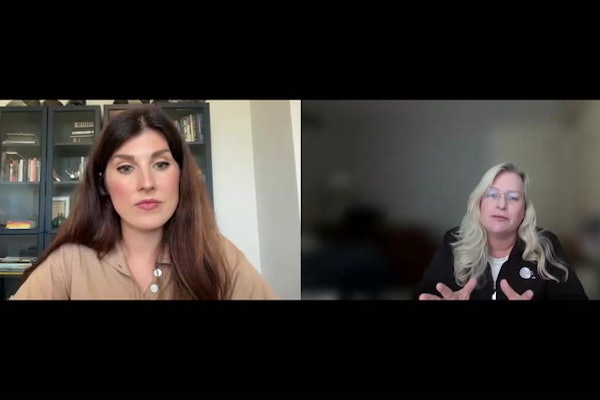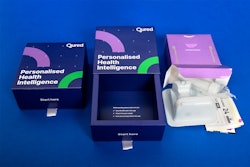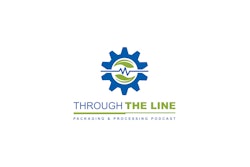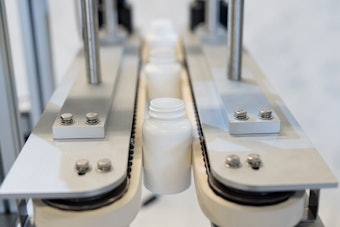As tariffs on imported goods create volatility across global supply chains, brand owners, CPG manufacturers, and contract manufacturers and packaging are responding with caution—and in some cases, outright retreat—when it comes to investing in new packaging equipment. In a PMMI Town Hall titled "Navigating Tariff Changes - A CPG Perspective," a roundtable hosted by PMMI’s Jorge Izuqierdo, VP of market development, leaders from companies including Danone, Quality Harvest Foods, American Botanicals/Aloha Medicinals, and QualiTech shared how tariffs are reshaping capital plans, sourcing strategies, and vendor expectations.
“How can you [as my OEM partner] help me overcome that anxiety and uncertainty with some sort of terms or financial model that mitigates risk?” - Scott Spencer, Quality Harvest Foods
Shawn French, engineering director at Danone North America, put it bluntly: “We’ll do fewer projects. We’ll do less work. It will negatively impact our spending in the U.S., which is probably not the desire of the tariff. But I think that’s the real net result. It’s not making anything better. I don’t hear anybody on this call saying, ‘My life suddenly got better because of this new charge.’”
That sentiment was echoed—if not amplified—by Scott Spencer, CEO of Quality Harvest Foods. His experience with a surprise charge during a brief tariff window made him hesitant to spend at all. “We’ve paused everything. Paused 70% of my capital plan,” Spencer said. “I got burned by a raw material during one of the unpauses… there was like a three-day window that I could have gotten tariffed, and I actually did. So I’m really hesitant to make any kind of commitments right now, not knowing what the future brings.”
Spencer’s frustration runs deeper than just financial risk. He described a lack of transparency from one of his vendors as a major blow to the relationship. “They just sent me the bill. So if you think I’m excited to do business with that vendor again, you’re probably guessing my attitude about it,” he said. “Just passing a customer invoice on to me isn’t going to earn your repeat business.”
Transparency emerged as a central theme for all participants. Greg Flickinger, CEO of American Botanicals and Aloha Medicinals, underscored the importance of clear and proactive communication with OEMs. “We don’t want to get caught like Scott did and just find the bill show up,” he said. “If these costs exist, then is there a way that we can share the cost across the supply chain and make it palatable for everyone? That gets back to developing a good business partnership.”
We’ll do fewer projects. We’ll do less work. It will negatively impact our spending in the U.S., which is probably not the desire of the tariff. But I think that’s the real net result. -Shawn French, engineering director, Danone N.A.
Flickinger, who oversees both U.S.-based and internationally dependent operations, noted how tariffs have had opposite effects on his two businesses. The botanical side, heavily reliant on imports from Asia, faced “significant impact,” prompting strategic sourcing shifts and product discontinuations. Conversely, the U.S.-based mushroom business benefited as customers looked to replace low-cost Chinese imports.
While French and Spencer signaled retrenchment, Jon Doering, COO of QualiTech, stood out as a more optimistic voice for continued strong business between brands and their OEM partners. “We are still pursuing investment,” he said, “but it’s just going to be part of the overall evaluation process.” Doering emphasized the importance of clear contract language regarding tariffs and called for “transparency around any parts that are sourced internationally… language in a contract that says 100% of tariffs will be passed on will probably not make the contracting period go very well.”
As companies adapt, the stakes are particularly high when the lead time for equipment stretches over years. “From the time of the capital approval to the time of the delivery and commissioning… you could be at a year and a half or two years,” said Flickinger. “None of us can read the tea leaves to know where that’s going to go. So you have to carry higher levels of contingencies… but that clearly impacts other projects as well.”
For companies operating at scale, like Danone, some capital spend remains inevitable. “We’re still going to buy the right equipment for the application from the right vendor,” said French. “If I pick the low-cost supplier or the best tariff option, and the machine doesn’t work, it didn’t win, right? Nobody says, ‘Hey, it’s okay that line’s not running because you avoided the tariff.’”
Still, the current climate has left smaller companies like Quality Harvest Foods more exposed. “As a relatively small manufacturer, working capital is pretty tight,” said Spencer. “How can you help me overcome that anxiety and uncertainty with some sort of terms or financial model that mitigates risk?”
Flickinger offered a solution-oriented mindset: “It’s about shared equity, shared ownership. Lots of communication… risk communication. We may not like it, but we’re all swimming in the same fish bowl.”
What OEMs and CPGs Can Do Together
Amid the uncertainty, panelists were clear: there are practical, proactive steps OEMs and CPGs can take to collaborate more effectively.
At the heart of that cooperation is the contract. “We’re working on contract language and other provisions around country of origin, required disclosure, and critical spares support,” said Doering. “That is going into contract language so we can have an understanding of the cost structure. If you don’t have everything designed well up front, you may spend less initially, but you’re not gaining the value holistically from that investment.”
For Spencer, the issue is less about legal fine print and more about trust and dialogue. “The best business partner is somebody who wants to create win-wins,” he said. “I’m not asking you to work miracles, but just passing an invoice on to me isn’t going to cut it.
Flickinger pushed for a shared approach to risk. “We know if it’s not in the contract, it becomes a sticking point,” he said. “CPGs and OEMs need to think outside the box on how to negotiate unforeseen costs. It’s not just about cost sharing—it’s about maintaining momentum on capital plans without exposing either side to undue risk.”
That means establishing not only who pays what, but when. Spencer suggested exploring more flexible financial models, such as short-term rentals or phased payments, to reduce the pressure of making high-stakes decisions amid uncertainty.
And when tariffs change after contracts are signed? Doering was clear: “It shouldn’t be just a direct bill. If we go under contract and tariffs go up by another 5%, that needs to be a conversation—not a surprise charge.”
In the end, the group agreed, it’s not about eliminating risk—but managing it openly, early, and transparently together. OEM























